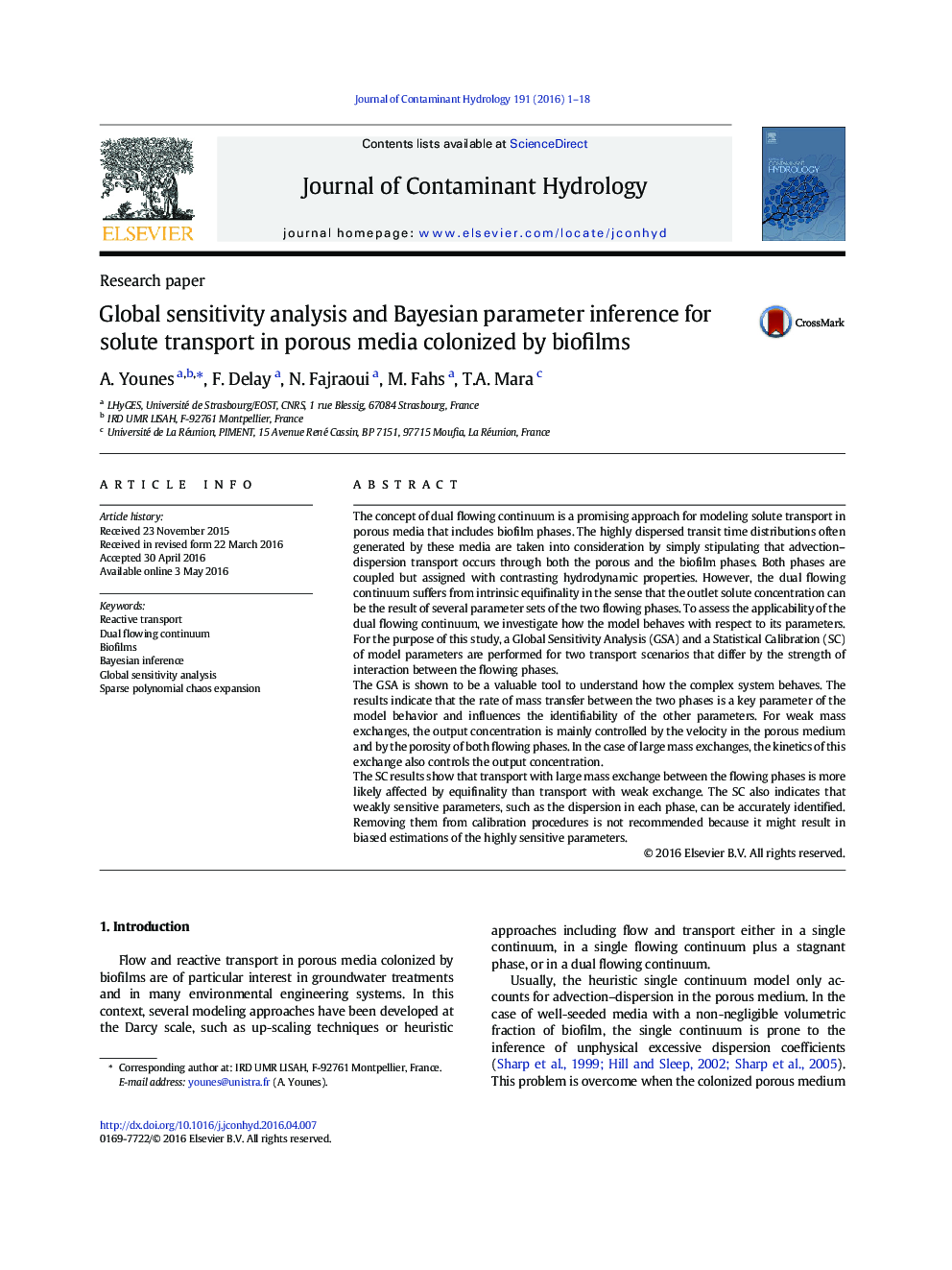| کد مقاله | کد نشریه | سال انتشار | مقاله انگلیسی | نسخه تمام متن |
|---|---|---|---|---|
| 4546342 | 1627020 | 2016 | 18 صفحه PDF | دانلود رایگان |
• We investigate how the dual flowing continuum model behaves with respect to parameters.
• Rate of mass transfer between phases highly influences identifiability of the parameters.
• Transport with large mass exchange is more likely affected by equifinality.
• Removing weakly sensitive parameters from calibration can result in biased estimation.
The concept of dual flowing continuum is a promising approach for modeling solute transport in porous media that includes biofilm phases. The highly dispersed transit time distributions often generated by these media are taken into consideration by simply stipulating that advection–dispersion transport occurs through both the porous and the biofilm phases. Both phases are coupled but assigned with contrasting hydrodynamic properties. However, the dual flowing continuum suffers from intrinsic equifinality in the sense that the outlet solute concentration can be the result of several parameter sets of the two flowing phases. To assess the applicability of the dual flowing continuum, we investigate how the model behaves with respect to its parameters. For the purpose of this study, a Global Sensitivity Analysis (GSA) and a Statistical Calibration (SC) of model parameters are performed for two transport scenarios that differ by the strength of interaction between the flowing phases.The GSA is shown to be a valuable tool to understand how the complex system behaves. The results indicate that the rate of mass transfer between the two phases is a key parameter of the model behavior and influences the identifiability of the other parameters. For weak mass exchanges, the output concentration is mainly controlled by the velocity in the porous medium and by the porosity of both flowing phases. In the case of large mass exchanges, the kinetics of this exchange also controls the output concentration.The SC results show that transport with large mass exchange between the flowing phases is more likely affected by equifinality than transport with weak exchange. The SC also indicates that weakly sensitive parameters, such as the dispersion in each phase, can be accurately identified. Removing them from calibration procedures is not recommended because it might result in biased estimations of the highly sensitive parameters.
Journal: Journal of Contaminant Hydrology - Volume 191, August 2016, Pages 1–18
